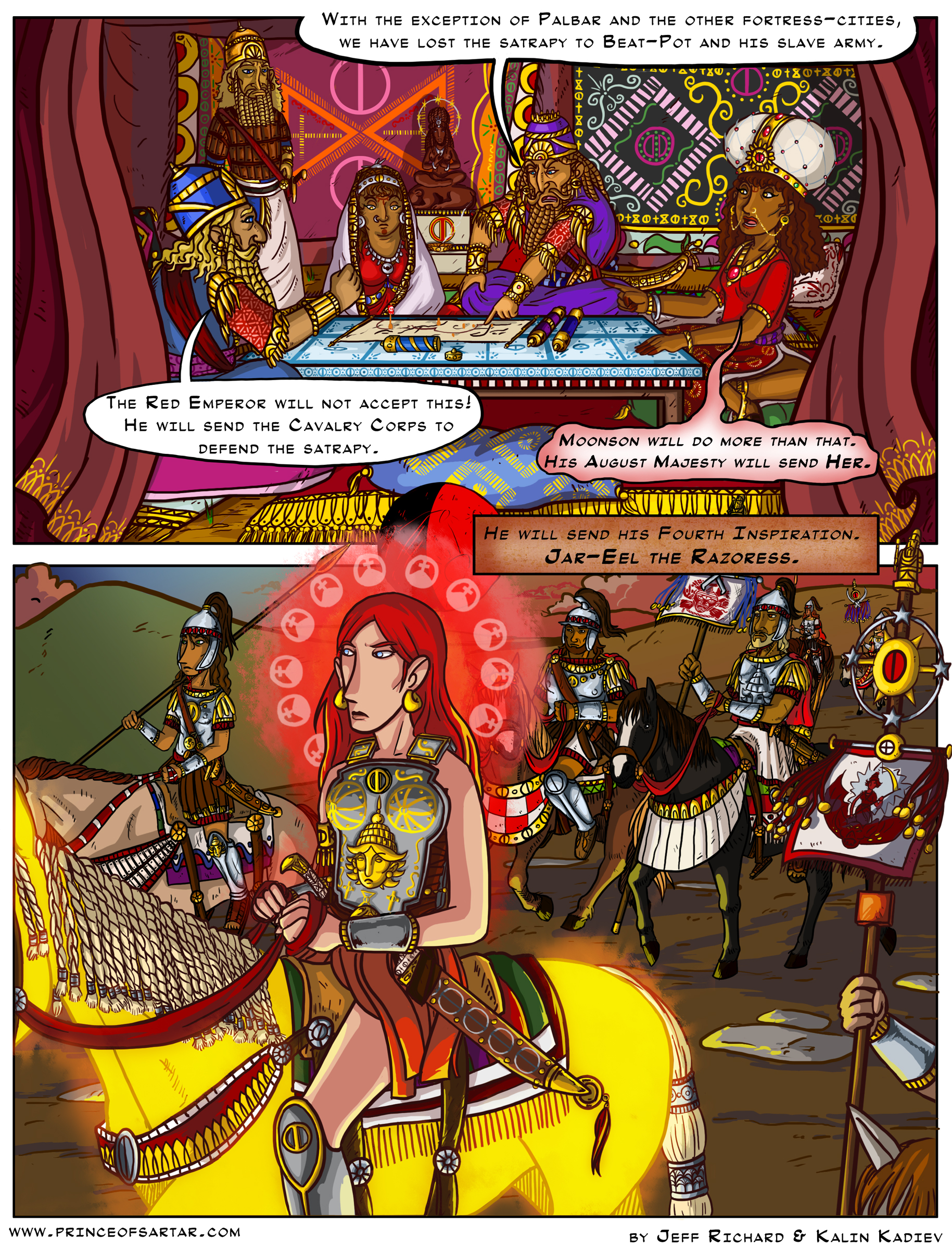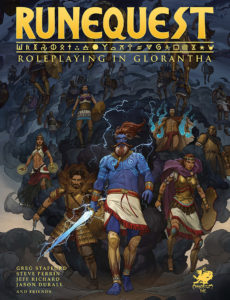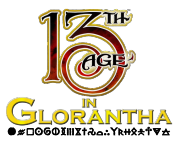Prince of Sartar
How one man became a god
There are currently no widgets assigned to the left-sidebar, place some!
Once you add widgets to this sidebar, this default information will go away.
Widgets can be added by going to your dashboard (wp-admin) ➔ Appearance ➔ Widgets, drag a widget you want to see into one of the appropriate sidebars.
Once you add widgets to this sidebar, this default information will go away.
Widgets can be added by going to your dashboard (wp-admin) ➔ Appearance ➔ Widgets, drag a widget you want to see into one of the appropriate sidebars.
Languages
Prince of Sartar is an epic story of the Hero Wars set in Greg Stafford's Glorantha.
By Jeff Richard and Kalin Kadiev.
Curious about Glorantha?
Chapters
Recent Comments
- jaguar on 119 – Time to rest
- Colie Dillon on 119 – Time to rest
- Steve S. on 119 – Time to rest
- Oliver Dickinson on 119 – Time to rest
- greattsathoggua on 119 – Time to rest







Quite an entrance!
Shouldn’t Jar-eel’s moonsword(s) be more curved?
They are a lot slimmer than the scabbard would suggest. Their curve begins after a short straight piece continuing from the hilt, so that you cannot sheath them following the curve and have all of the blade covered.
Jörg is correct here. The moonswords are not just a curved sword like a cavalry saber or a scimitar, but has a straight piece and then a curved edge (who’s point is still on the same level as the straight part of it), and thus they can’t really fit into a tighter scabbard.
The Guide (page 15) contradicts your interpretation, though some historical sickle swords (http://www.metmuseum.org/toah/works-of-art/11.166.1) are similar – however note that the curve of the sword would require a much wider sheath than shown in your illustration.
Many historical khopesh swords did not have a point that was in line with the hilt (https://www.pinterest.com/pin/349310514821897505/) as is shown in the Guide.
Well, I can guarantee you I’m not changing the illustration at this stage, though all of this is noted.
I’ve admired your attention to detail, and the matter of the scabbard just ‘popped out’. There’s no archaeological evidence for sickle sword scabbards, and the assumption is that they were either simple secured to a belt with a leather loop, or carried in something like a bow case. A modern re-enactor has attempted to create a khopesh scabbard: http://www.swordforum.com/forums/attachment.php?s=f45ffe7620a13bd0a822fa27b8724937&attachmentid=37975&d=1117163974.
I couldn’t decide if I should leave the sword hanging on a belt or give it a scabbard, and in the end I decided to go with a scabbard. It might have been wrong, but that’s how it is. I might change this later in the comic, none of this is set in stone or anything.
Here’s a quick sketch that Kalin did to show how it works:
http://www.princeofsartar.com/wp-content/uploads/2014/11/sword.png
And sadly, it doesn’t. 8-(
The “Scabbard” could well be open on the back, being more like “blade protector”.
Oh, glowing horse….!
Clearly a sunhorse, though I cannot say whether Grazer or Char-un in origin. We know that the Grazers cooperated in the sack of Boldhome 12 years earlier.
I’d like to know more about Jar-Eel’s horse. It’s so cool and shiny! 😉
Once again, I am grateful for this insight into Glorantha. My Glorantha may vary, but this artistic interpretation is gorgeous, and the storytelling has been a terrific blend of writing and art. I look forward to some more official commentary to add to my understanding of the art, especially in the first panel. Also, many funny hats.
Digging hard on Jar-Eel’s halo and the other lady’s white headdress. And the horse glow. Are the soldiers wearing iron armor?
Silver armor, actually. Jar-Eel has iron armor. It’s kind of hard to distinguish them, but in general I try to make silver more blue-ish, while iron is gray.
The Golden Horse is undoubtably (to me) one of Yelm’s personal steeds gifted by the Red Emperor to her, or fetched herself from Yelm’s stables. Jar-eel is the current incarnation of the Red Goddess on earth, she’s not going to have a normal horse, she’s going to have the coolest one she can.
Beautiful — just gorgeous!